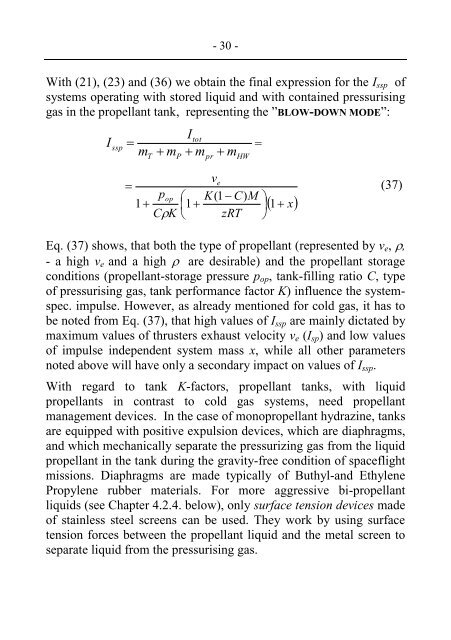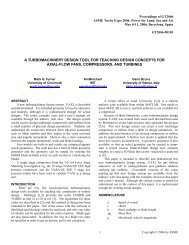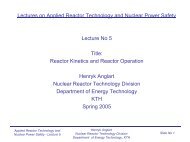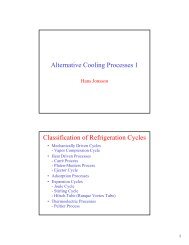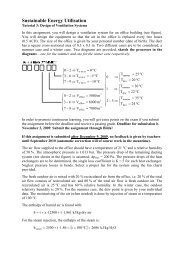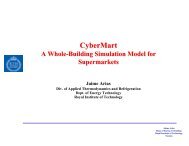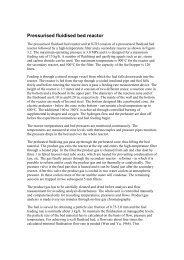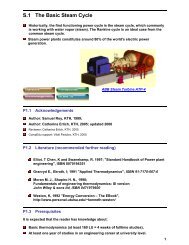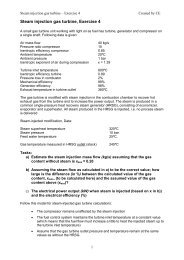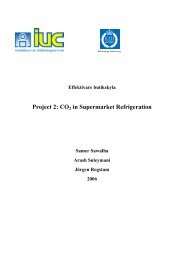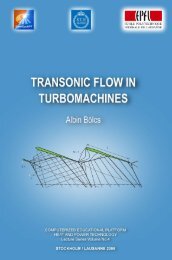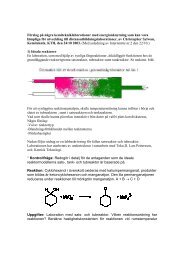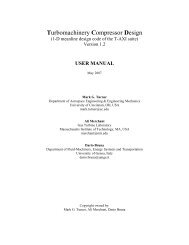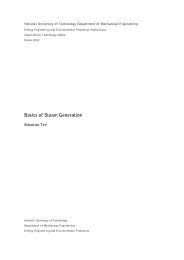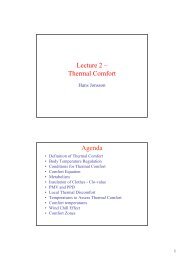SPACECRAFT PROPULSION - KTH
SPACECRAFT PROPULSION - KTH
SPACECRAFT PROPULSION - KTH
- No tags were found...
Create successful ePaper yourself
Turn your PDF publications into a flip-book with our unique Google optimized e-Paper software.
- 30 -With (21), (23) and (36) we obtain the final expression for the I ssp ofsystems operating with stored liquid and with contained pressurisinggas in the propellant tank, representing the ”BLOW-DOWN MODE”:I totsspmT mP mpr m=HWIvepop K(1 C)M 111CK zRT x(37)Eq. (37) shows, that both the type of propellant (represented by v e , ,- a high v e and a high are desirable) and the propellant storageconditions (propellant-storage pressure p op , tank-filling ratio C, typeof pressurising gas, tank performance factor K) influence the systemspec.impulse. However, as already mentioned for cold gas, it has tobe noted from Eq. (37), that high values of I ssp are mainly dictated bymaximum values of thrusters exhaust velocity v e (I sp ) and low valuesof impulse independent system mass x, while all other parametersnoted above will have only a secondary impact on values of I ssp .With regard to tank K-factors, propellant tanks, with liquidpropellants in contrast to cold gas systems, need propellantmanagement devices. In the case of monopropellant hydrazine, tanksare equipped with positive expulsion devices, which are diaphragms,and which mechanically separate the pressurizing gas from the liquidpropellant in the tank during the gravity-free condition of spaceflightmissions. Diaphragms are made typically of Buthyl-and EthylenePropylene rubber materials. For more aggressive bi-propellantliquids (see Chapter 4.2.4. below), only surface tension devices madeof stainless steel screens can be used. They work by using surfacetension forces between the propellant liquid and the metal screen toseparate liquid from the pressurising gas.


